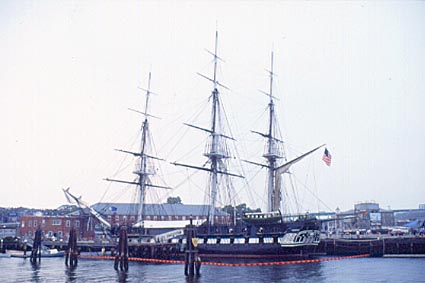|

The Charles River at Boston.
Tributaries include:
The Charles River is a meandering river in North East United States. Flowing mainly over soft materials deposited by ice sheets during the last stages of the last Ice Age, the river is some 130 kilometres (80 miles) long, has a drainage basin covering 8000 square kilometres (300 square miles) and a small vertical fall of 100 m (330 feet) over its length from its headwaters near Franklin to its mouth in Boston harbour. The Charles River and its tributaries were important in the early colonial history of North America and also strategically during the Revolutionary Wars. The flow of the Charles River has been regulated using some 20 dams. The lower five dams include fish ladders to enable migrating fish (including River Herring) to reach their spawning grounds. The Charles River includes 20,000 square kilometres (8000 square miles) of protected wetland. The Esplanade is the most popular river front park in the United States. Other Massachusetts Rivers Between the Charles River and the Merrimack River - the two major rivers of Massachusetts and New Hampshire - there are a number of small rivers that drain directly into the North Atlantic and provide possibilities of natural harbours. These include the Ipswich River and the Parker River, which both flow into the estuary, or drowned river valley, called Plum Island River. Plum Island is a long barrier beach which deflects the Parker River. The site of Ipswich was inhabited by Native Americans and called Agawam (= meadowland) when it was first visited by Englishman Captain Harlow in the early 17th century. The site where the Ipswich River flows into the estuary provides a naturally sheltered harbour. The town of Ipswich (named after a town in Essex, England) was established here in 1629 by the son of the first governor of the Massachusetts Bay Company and by 1764 a granite stone bridge, the Choate Bridge, was built at the lowest crossing point of the river. The naturally more advantageous site of Boston on the larger Charles River, some 50 kilometres (30 miles) south of Ipswich eventually came to dominate the region. The salt water marshes of the estuary are a famous place for wildlife and for clams. |